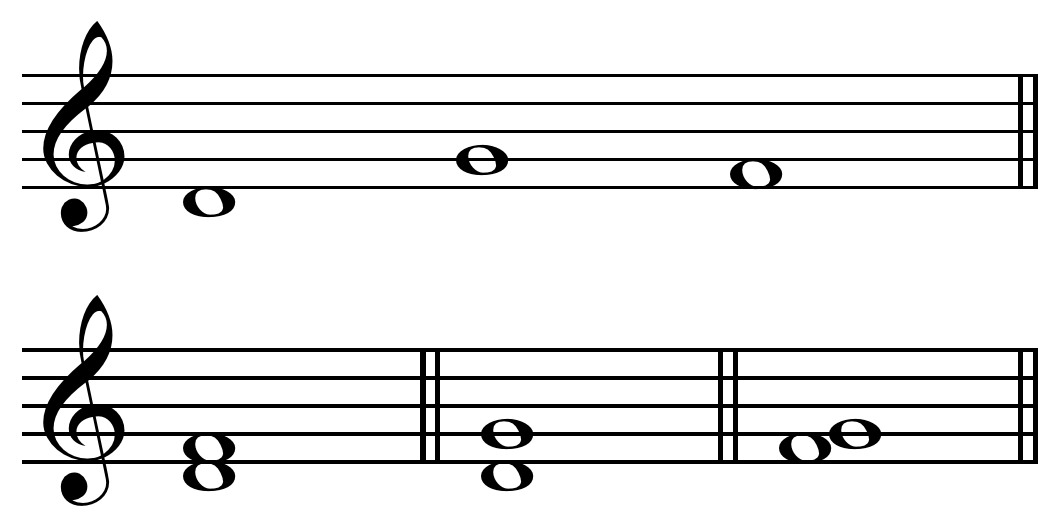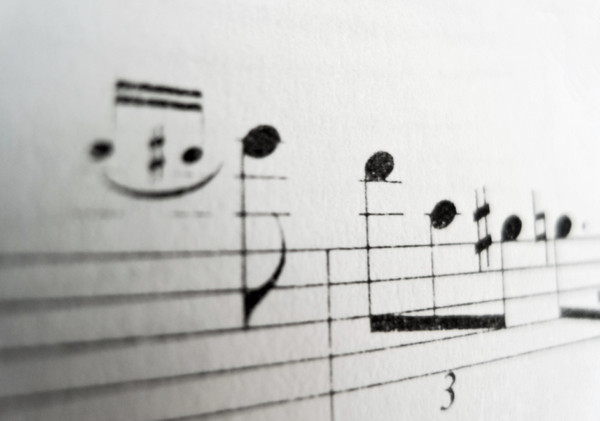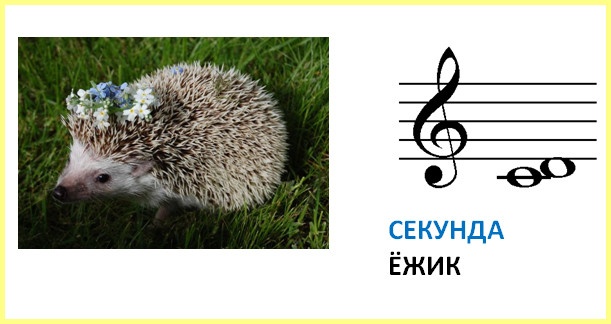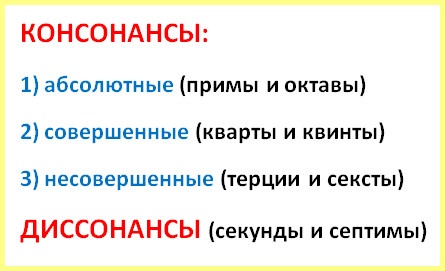
Harmonic and melodic intervals in music
Contents
An interval in music is a combination of two sounds. But they can be combined in different ways: they can be played or sung at the same time or in turn.
Harmonic Interval – it’s such an interval whose sounds are taken at the same time. Such intervals are the basis of musical harmony, which is why they have such a name.
melodic interval – is the interval in which the sounds are taken at random: first one, then the second. From the name it is clear that such intervals give rise to melodies. After all, any melody is a chain in which several identical or different intervals are connected.
Melodic intervals can be ascending (step from the bottom sound to the top) and descending (transition from upper to lower sound).

How to distinguish intervals by ear?
Harmonic and melodic intervals must be able to distinguish by ear. At solfeggio lessons in music schools and colleges, special exercises for auditory analysis are even practiced, when students play different harmonies, and they “guess” what exactly they were played. But how to do that?
There are many different ways to help remember how intervals sound. For example, the method of associations is often practiced with children, when the sound of intervals is compared with the images of animals. It helps to distinguish between harmonic intervals by knowing their division into consonances and dissonances, and melodic intervals are often remembered by the initial sounds of famous songs.
Let’s look at each of these methods separately.
Association method (intervals and images of animals)
So, we have eight basic intervals. Their sound needs to be characterized in some way. In this case, images of animals are often involved. Moreover, different details of the images turn out to be important: either the sounds of animals, or their appearance – size, color, etc.
You can offer to do this creative work for the child himself. In this case, you just need to play him all the intervals in order and at the same time ask which animal can be drawn using these sounds. It is permissible, of course, to give a ready-made solution. It could be something like this (you can think of something else):
- Prima – This is a gray hare that jumps from bump to bump.
- Second – a hedgehog, because it sounds prickly, like needles on the back of a hedgehog.
- Third – cuckoo, its sound is very reminiscent of cuckooing.
- Quart – an eagle, sounds tense, serious and belligerent.
- Quint – jellyfish, sounds empty, transparent.
- Sext – deer, gazelle, sounds very beautiful, elegant.
- Seventh – giraffe, the sounds of the seventh are far apart, the path from one to the other is long, like the neck of a giraffe.
- Octave – a bird that had just been on the ground, but instantly fluttered and rose high to the top of the forest spruce.
In addition, we offer you to download a visual aid for teaching children the topic of intervals. In the attached file you will find pictures of animals and musical notes of sounding intervals adjacent to them.
INTERVALS AND ANIMALS IN PICTURES FOR KIDS – DOWNLOAD

Consonances and dissonances in music
All intervals can be divided into two large groups – consonances and dissonances. What does it mean? Consonances are intervals that sound harmoniously, beautifully, the sounds in them are in harmony and harmony with each other. Dissonances are intervals that, on the contrary, sound sharp, disagree, the sounds in them interfere with each other.
There are three groups of consonances: absolute, perfect, and imperfect. Absolute consonances include pure prima and pure octave – only two intervals. Perfect consonances are also two intervals – a perfect fifth and a perfect fourth. Finally, among the imperfect consonances are thirds and sixths in their varieties – they are small and large.
If you have forgotten what pure, large and small intervals are, then you can repeat and understand in the article “Quantitative and qualitative value of the interval”.
Dissonant consonances include all seconds and sevenths, as well as some increased and decreased intervals.

How to distinguish intervals by ear, knowing about consonances and dissonances? You need to remember the following characteristics and reason logically:
- Prima – this is a repetition of the same sound, it will not be difficult to recognize it, and it will hardly be possible to confuse it with something.
- Second – this is dissonance, the sounds of a second are close and interfere with each other. Remember the spiny hedgehog?
- Third – one of the most euphonious intervals. Two sounds side by side, they sound great together. The third is little Mozart’s favorite interval.
- Quart – perfect consonance, sounds a bit tense.
- Quint – one more consonance, it still sounds empty and rich at the same time, the distance between the sounds becomes quite noticeable.
- Sext – the elder brother of the third. The sounds are located far from each other, but their life together is beautiful.
- Seventh – two sounds are far away and interfere with each other. Big brother of the second.
- Octave – the two sounds completely merge, it all sounds serene, calm.
Memorize song intervals
A popular way to memorize intervals is to learn them from the beginning of the melodies of well-known songs or pieces of classical music. At the same time, do not forget that the intervals can be taken both up and down. And there is an example for almost every case. Of course, not every interval can be matched with a song, but for most simple intervals it works.
Here is what we recommend for memorizing the intonations of some up and down intervals:
Interval | intonation up | intonation down |
pure prima | Russian song “There was a birch in the field”, English Christmas song “Jingle bells” | |
| minor second | Song of the crocodile Gena “Let them run awkwardly”, “Solar circle” | Beethoven “For Elise” or Mozart “Symphony No. 40” |
Major second | English song “Happy birthday”, Ursa lullaby “Spooning the snow” | Song from the cartoon “Antoshka-Antoshka” |
Minor third | The song “Moscow Nights”, the beginning of a minor triad | New Year’s song “Little Christmas tree is cold in winter”, cuckoo intonation |
| Major third | The beginning of the major triad, March of the cheerful guys “Easy in the heart from a cheerful song” | Children’s song “Chizhik-Pyzhik” |
Pure quart | State anthem of the Russian Federation “Russia is our sacred state” | Children’s song “A grasshopper sat in the grass” |
| Perfect fifth | Russian folk song “Let’s go to the garden for raspberries” | Friendship song “Strong friendship will not break” |
Minor sixth | Song “Beautiful Far Away”, Chopin’s Waltz No. 7 | Instrumental melody “Love Story” |
| Major sixth | New Year’s song “A Christmas tree was born in the forest”, Varlamov’s song “Don’t you sew me, mother, a red sundress” | Song from the movie “The clock strikes on the old tower” |
| Minor Septima | Romance Varlamov “Mountain Peaks” | |
Here are some examples that can be very helpful in mastering melodic intervals. With wide intervals (septims and octaves), vocal melodies begin very rarely, since they are inconvenient for intonation. But they can always be recognized by the nature of the sound or by the method of elimination.
Thus, in this issue, we have considered with you a whole “bouquet” of very important issues regarding musical intervals: we compared the harmonic and melodic types of intervals, and found out what methods can help you learn intervals by ear. In the next issues we will continue the story about intervals, we will consider them on the steps of major and minor. Until we meet again!




